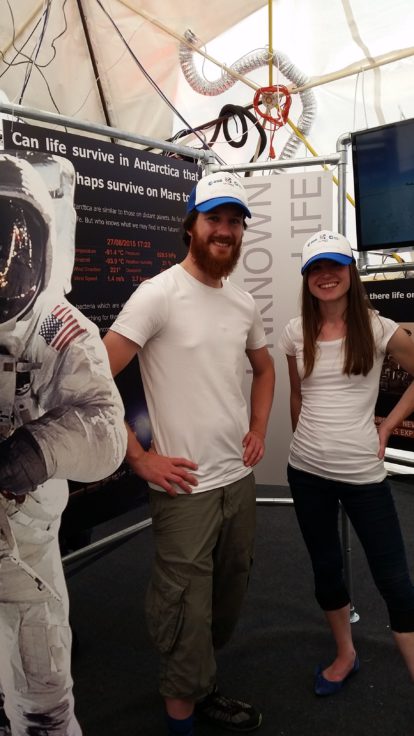Antarctic ‘space’ exhibition opens in Cheltenham
An exhibition showing how the isolation of Antarctica is used as a platform for understanding space opens this week (7-12 June) at The Times Science Festival in Cheltenham. White Space: The Art of Isolation is a collaboration between British Antarctic Survey (BAS) and ESA and showcases medical research at both Concordia and Halley Research stations in Antarctica.
A new narrative called “Step to the stars – our future in space starts on Earth” following the story of ESA medical doctor Beth Healey is also unveiled.
Beth Healey spent over a year at the Concordia research station in Antarctica. Her mission: to conduct experiments for ESA on the international crew, preparing for future space missions.

Concordia sits on a plateau 3200 m above sea level. A place of extremes, temperatures can drop to –80°C in the winter, and the Sun does not rise above the horizon in the winter, forcing the crew to live in isolation without sunlight for four months of the year. In parallel, a medical doctor at the BAS Halley Research station conducted similar experiments with its 13 wintering staff.
The exhibition is organised with the support of the UK Space Agency, ESA and BAS. It showcases an Antarctic-spaceflight analogue research laboratory, with interactive installations based on real experimental protocols. WhiteSpace will then tour science festivals, events and shows throughout the UK over the summer.
ESA’s Anders Jordahl, who developed the Step to the Stars story with Beth Healey, says: “Nothing grips people like a good story. Beth’s story is real – and she tells it like you were living it yourself.
“Her adventures, of going through darkness to light, are both fascinating and inspiring. She has made an incredible journey.”
The story is also being made available to the public on the ESA website, starting today with the first two parts. Following parts will be posted over the coming weeks and months.
“Sharing such exciting experiences can certainly help in raising awareness about ESA scientific activities and inspire the young generation – in particular girls, we hope – to get involved in science, engineering and exploration,” says Anders.
What really happens in a crew of 13 isolated in a research station for nine months? Find out more here: http://blogs.esa.int/concordia/category/step-to-the-stars/
White Space: the Art of Isolation in the Space Station Dome opposite Cheltenham Town Hall from 7-12 June. Suitable for a family audience. Free.